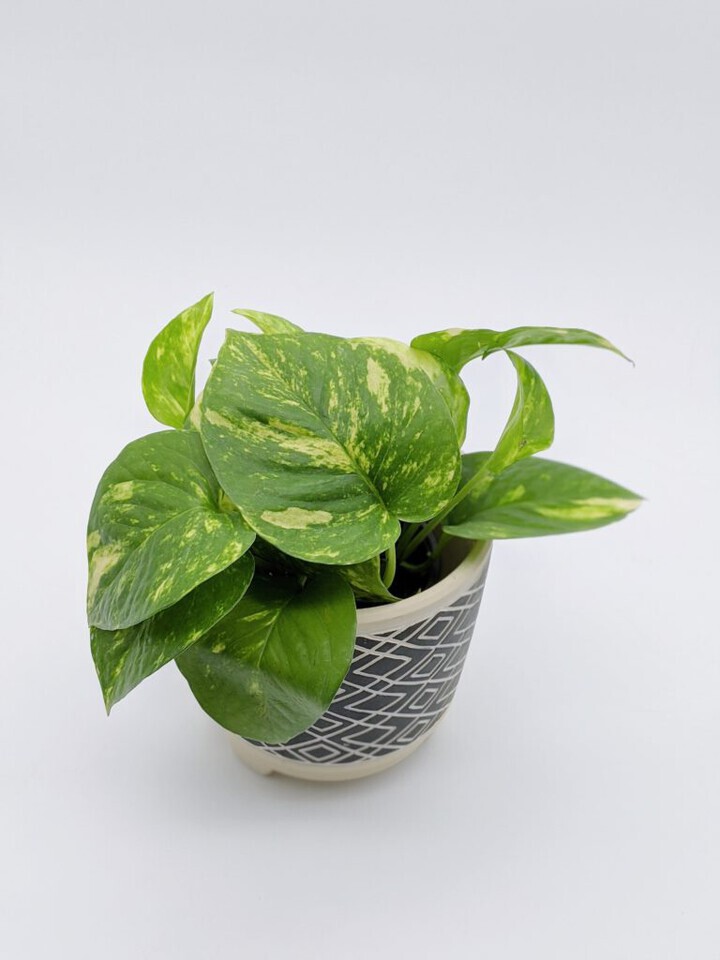Golden Pothos might be the perfect plant for the first-time Plant Parent, but even experienced Plant Parents can appreciate its simple yet striking beauty. Its heart shaped leaves are green with yellow variegation, and its foliage grows in a trailing habit and can grow up to ten feet long with the right conditions. While Golden Pothos, or Epipremnum aureum, isn’t vining and will not cling on its own, it can be trained along ceilings and walls or around stair railing.
A member of the Aaraceae family, this easy-going plant can be placed just about anywhere! It will tolerate any level of light, though it will do best in bright, indirect light. Too much light can cause Golden Pothos to fade, and too little light can cause the variegation to revert back to green. Adjusting the amount of light the plant gets will correct either of these conditions. Keep in mind that the brighter the light, the more water Golden Pothos will need. These facts combined with the fact that Pothos also has no humidity requirements make for a wide array of placement options, but do take care to keep Golden Pothos away from children and pets as its sap is irritating and can be harmful.

Water requirements for Golden Pothos are also very simple – allow the soil to dry out completely before watering. Golden Pothos is very forgiving when it comes to missed waterings, making perfect for anyone just learning how and when to water houseplants. Golden Pothos makes a great hanging plant (which will help keep it out of the reach of chewing little ones), so a hanging pot is perfect for it. To create a bushier plant, trim Golden Pothos’ vines now and again. If you prefer a plant that stretches to great lengths, just allow it to grow normally.
Golden Pothos will not flower, but it is said to be an excellent plant for helping to purify the air. If it begins to drop leaves and all proper care has been taken to provide the ideal environment for Golden Pothos, it could mean that the plant has become root bound. Fully yellow leaves often mean the plant is getting too much water, and crispy brown leaves mean the soil is getting too dry between waterings.